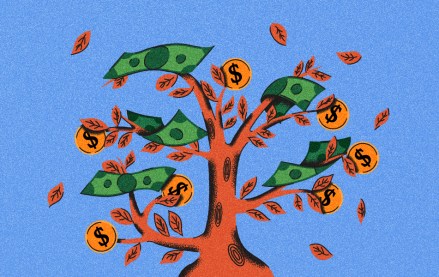‘Platforms are not forever’: Hearst’s Troy Young on platform-publisher relations

As president of Hearst Magazines Digital Media, Troy Young oversees the online brands of storied titles including Cosmopolitan, Elle and Esquire and digital-only properties like Delish and BestProducts.
He talked with us about making video profitable, an area he sees becoming fully half of Hearst’s content feed; and how the time is right for publishers to get a bigger fair share for the content they put on social platforms. Here are excerpts, lightly edited for clarity:
What’s the current state of platform-publisher relations these days?
The pact between you and a platform was, you give them clicks, they give you links. There was a trade. Now what’s happening is, content has become central to the value proposition of platforms. It’s across lots of points of distribution. But you can’t take distribution to the bank. More systematic access to the financial wins of these platforms is important. This is the new media war. It’s about content negotiating its value inside distribution platforms.
What’s changed in this dynamic in the three years you’ve been at Hearst?
The realities of distributed content. The new age of video has created even more costs to produce content for these environments. At same time, you’ve seen content become a bigger proposition of the value of a social network. And new players — Snapchat, Verizon, Microsoft, Alexa — have emerged that want to make content a key part of their proposition. They’re all looking for a differentiator. And content is important.
Do you think the platforms see it the same way?
Yes. Platforms are paying more attention. They are creating teams to work more closely with the publishing community. Curation — which means favoring reputable media brands — will become more important. Content will demand half the revenue. And organizations that represent the interests of content will become more important. And I think you’ll see platforms invest in content companies. Platforms are not forever. Content becomes a great insulation against commoditization.
So in some ways publishers are in a good negotiating position.
What you’re seeing is little bit of boldness to say we deserve a bigger piece of revenue.
What’s the endgame — will you deprioritize or withdraw from platforms that don’t step up?
In all cases we look at what is [the platform’s] financial potential and what are the substitutes. What is our leverage. The ones that want to build around content need to build it around the needs of content companies. It’s up to them to build the right environment for content. And if they’re not, we’ll deprioritize. We are putting people against the creation of content. Snapchat has put a lot of positive pressure on the system. They make places for content brands. They care about content a lot. If people describe them as difficult, it’s because they’re demanding of quality.
How important do you see video becoming to Hearst?
I think it’ll be half of our feed. Now it’s probably 10 percent.
Video is expensive, though. How are you organizing to create it efficiently?
We don’t look at video like it’s representative of a singular department. So we have five teams making video, ranging from velocity videos to television shows, and we’re educating editors in how to create their own video. You never want to lose voice of the brand. You centralize where it makes sense. That’s a constant dialogue internally. Because the same thing with Snapchat applies to video.
What’s hardest about video?
Video is a team sport and video is talent and incredibly demanding on a production level. All of those are very different from a journalist sitting down and writing a story. And it’s incredibly demanding in real estate — there’s storage, studios, makeup people.
You made a lot of changes to make Hearst more digital-forward when you started two-plus years ago. What’s the biggest challenge you face today?
Integrating our international businesses. You have to deal with platform complexity, languages, different levels of maturity in different markets. The technical competency to manage a distributed business is complicated. You have to put together the tributaries of content across a distributed network and understand rights issues. There’s a whole team, audience and partnerships. So if you take a step back, selling content is our second source of revenue. As it becomes video, it becomes a bigger opportunity.
Lots of publishers are putting a bigger focus on reader revenue now. What’s the opportunity there for Hearst?
Local creates a wonderful opportunity for subscriber models because there’s specific demand for a product. In lifestyle media, the consumer’s quite well served by free. You have to be really smart about it because of how much it costs to acquire that subscriber. Advertising revenue is No. 1 for us. Selling content [via licensing] is our fastest-growing source of revenue. Transactional revenue is enormous and we’re doing that as well. BestProducts grew to 10 million uniques in one year. We think our ability to help a consumer make a decision is very valuable.
More in Media

Media Briefing: Publishers’ Q4 programmatic ad businesses are in limbo
This week’s Media Briefing looks at how publishers in the U.S. and Europe have seen programmatic ad sales on the open market slow in the fourth quarter while they’ve picked up in the private marketplace.

How the European and U.S. publishing landscapes compare and contrast
Publishing executives compared and contrasted the European and U.S. media landscapes and the challenges facing publishers in both regions.

Media Briefing: Publishers’ Q3 earnings show revenue upticks despite election ad pullback
Q3 was a mixed bag for publishers, with some blaming the U.S. presidential election for an ad-spend pullback.








